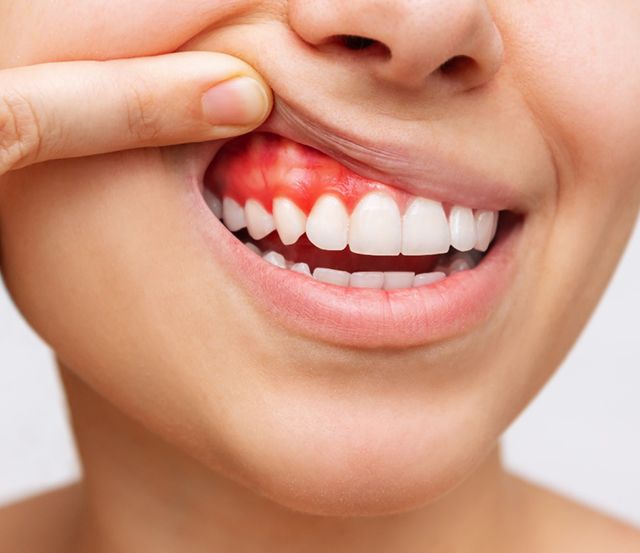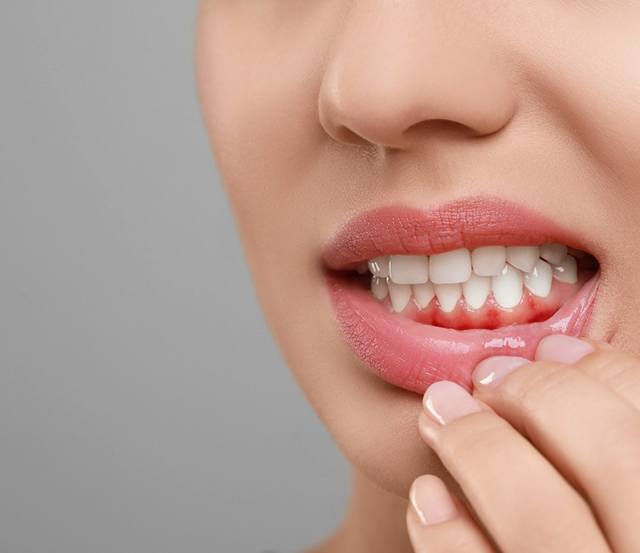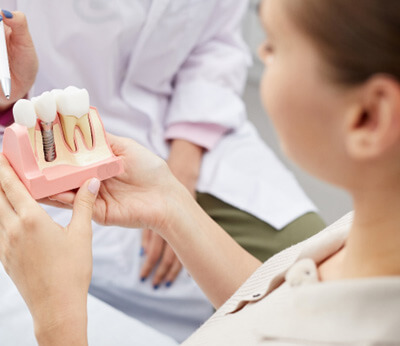Gum Disease Treatment – Dallas, TX
Fast & Easy Gum Care
Though crucial to your oral health, your teeth aren’t the only things dentistry looks after. Quality dental care also strives to keep your gums strong and vibrant over time. Without proper care, these tissues could get infected and cause all sorts of problems for your mouth. That’s why Ross Avenue Family Dental of Dallas offers excellent gum disease treatment here in Dallas. To learn more about this service, please keep reading or book a visit soon.
Why Choose Ross Avenue Family Dental of Dallas for Gum Disease Treatment?
- Same-Day Dental Appointments
- Friendly & Highly-Skilled Dental Team
- PPO Dental Insurance & Medicaid Accepted
What is Gum Disease?

At its core, gum disease is a bacterial infection of your gum tissues. It mostly results from excess plaque – a biofilm often caused by poor oral care. That said, the condition does have risk factors aside from bad hygiene. These elements are genetics, tobacco use, hormone changes, etc.
Gum disease has two distinct stages, each with its own qualities. The first is gingivitis – a mild gum inflammation that irritates your mouth. Gum disease can then become periodontitis, an infection that directly attacks your gums and jaw. While gingivitis is reversible, this harsh second stage can only be managed to prevent worse effects.
Symptoms of Gum Disease

Since it has two stages, gum disease can have many warning signs. Which ones to watch for will depend on whether gingivitis or periodontitis is the concern.
For example, consider gingivitis. The common symptoms for this stage of gum disease are:
- Gum swelling
- Dark red gums
- Gum tenderness
- Gum recession
- Bleeding gums
- Chronic bad breath
In contrast, the symptoms of periodontitis tend to be more severe. They include:
- Tooth sensitivity (often due to gum recession)
- Loose permanent teeth
- A shift in your bite
- Chewing pain
- Changes in your restoration’s fit
- Permanent tooth loss
How Do We Treat Gum Disease?

Before you receive gum disease treatment, Dr. Liu will first examine your mouth to see its condition. This assessment lets her learn the state of your gums – whether they’re sensitive, inflamed, etc. Once she’s done so, she’ll discuss treatment options with you; these services are scaling and root planing and/or Chlorhexidine antibiotic therapy.
Scaling & Root Planing

Scaling and root planing represent the standard way to treat gum disease. In general, they consist of a two-step process that takes two dental visits.
Scaling and root planing amount to a deep cleaning of your gums. At the initial “scaling” visit, our team eliminates plaque and tartar from around and below the gumline. The later root planing then smoothes the root areas of your teeth, ensuring the gums reattach to them healthily.
Do I Need Scaling & Root Planing?

Technically, only a dentist can confirm whether you need scaling and root planing. Their training helps them know whether your gums are healthy. That said, you can look out for gum-related issues that suggest a need for scaling and root planing. These include:
- Bleeding while brushing or flossing
- Swollen or puffy gums
- Gum recession
- Chronic bad breath (i.e., halitosis)
- Visible plaque buildup
True enough, the signs above can often be addressed with good oral hygiene. However, you’ll need scaling and root planing if your gum disease progresses far enough. Only treatment will keep your condition from getting worse in that case.
The Process of Scaling & Root Planing

The scaling and root planing process occurs over two dental visits, so it can be broken down into two parts.
For the first visit, Dr. Liu performs the scaling portion of your treatment. This work uses a scaler to clear away all plaque and tartar from the surface of your teeth. In fact, it’s thorough enough to even treat the pockets of your gums.
Dr. Liu follows up scaling with root planing at the second treatment visit. For this session, she and her team remove hardened bacterial deposits from the roots of your teeth. These deposits are hidden beneath the gumline, so removing them keeps bacteria from re-infecting the gums.
Aftercare Tips for Scaling & Root Planing

Since scaling and root planing can be intensive, your teeth and gums will need a few weeks to recover. You may feel increased sensitivity and discomfort during this period. Given that fact, try using the treatment aftercare tips listed below:
- Rinse with Warm Salt Water – After eating, please rinse your gums with warm salt water. Doing so will reduce gum irritation and loosen debris around your teeth. Just use ¼ teaspoon salt for eight ounces of water to make the salt water.
- Brush Your Smile Gently – Be gentle when brushing after treatment, and don’t use a hard-bristled toothbrush. Instead, only brush with a soft-bristled toothbrush to avoid irritation and bleeding. Also, brush in circular motions and move slowly to avoid worsening discomfort.
- Avoid Certain Foods & Drinks – It’s best to avoid hot and spicy foods, alcohol, and acidic drinks while you heal. Such products can cause inflammation and irritation.
- Don’t Overexert Yourself – To avoid delays in the healing process, avoid intensive physical activity directly after your treatment.
Chlorhexidine Antibiotic Therapy

There’s a chance you suffer from a rather severe case of gum disease. If so, we may suggest Chlorhexidine antibiotic therapy after scaling and root planing.
Our therapy (per its name) uses an antibiotic rinse called Chlorhexidine. Unlike an oral antibiotic, this medicine is applied to your gums and directly fights the infection. It targets the disease’s bacteria over two weeks and clears up your condition, all while lowering the risk of reinfection as well.
